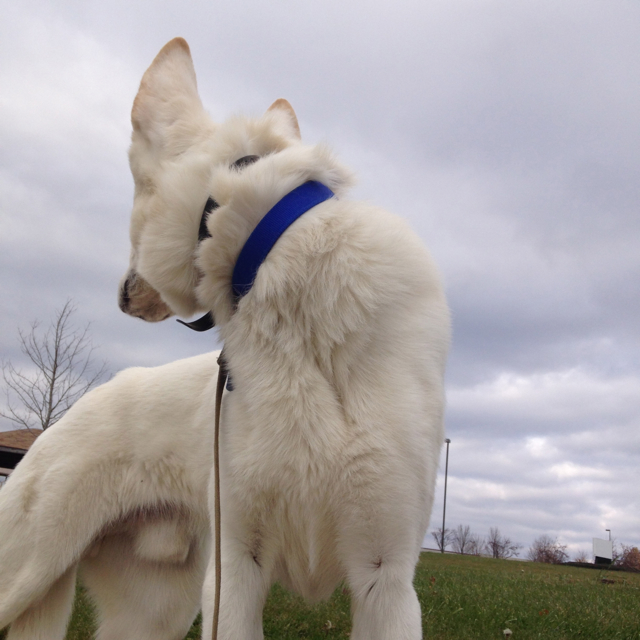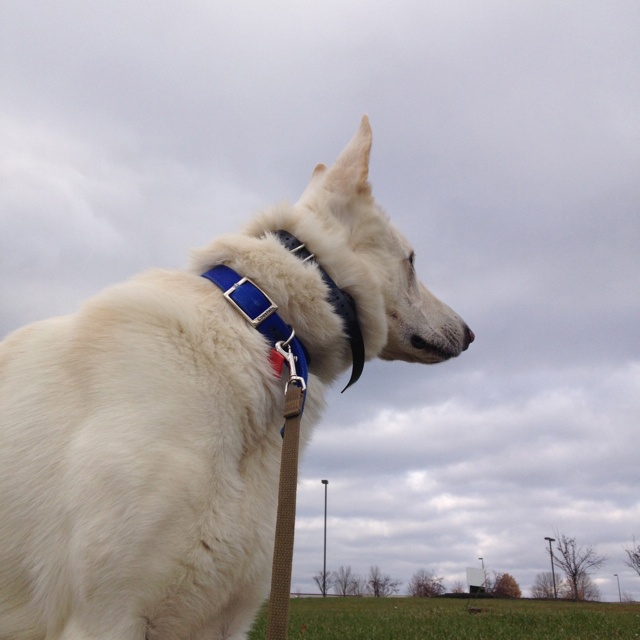Dog aggression is not a fun topic.
I know some dog trainers probably see it as sort of sexy and seem to take a lot of pride in repeating the phrase “I work with aggressive dogs” There has been a good deal of television culture and drama built around the buzz concepts of dog aggression, dogs that bite, and rehabilitation.
There is nothing sexy or exciting about it, IMO. It is sad. It breaks my heart a little bit each time I have to respond to a client inquiry about a dog that has bit someone.
The reality is, at that point, the dog human relationship is going through major breakdown and the real, day to day work that needs to be done to fix it isn’t all the glamorous.
The process of changing the behavior can be draining and often tedious. I don’t like to sound like a Debbie Downer because most of the time dog aggression CAN be changed. However, I like people to realize up front there is no quick fix.
Changing the behavior of a dog that is having problems with aggression means changing the behavior of the human(s) who live with the dog.
I want to introduce you to Si, a white GSD that some of you may remember seeing on the That’s My Dog! Facebook page back in the fall of 2014 when he came to us to start working on changing his mindset about the world he lived in. This is a picture from his first week in training.

Si was under socialized, anxious and reactive to any sudden change in the environment. He had 3 bites in his short history when his owner found us and committed to a training program to try and help him.
I’d like you to focus in on the word committed in the sentence above. That has been the key to the story I’m about to tell. Si’s owner didn’t just commit to spending the money to have someone “fix” his dog aggression. She committed to doing the work and making the changes that would be needed. Without that firm intention being in place, we would have been doomed to fail.
A talented dog trainer can get most dogs to behave perfectly for them, but there is no magic pixy dust we can sprinkle or put in the animals food that will keep the improved behavior in place. The owner must learn to replicate the process and behave in a way similar to the trainer if we are going to succeed. And the commitment must last for the lifetime of the dog.
Si spent a couple weeks with us in a board and train program. The B&T program provides us a clean slate to start new routines without the interference of the dog being in his comfort zone at home where the inappropriate learned behaviors started. It gives the trainer an advantage because the dog is off kilter for the first few days. He doesn’t know the people, doesn’t know the terrain and doesn’t know the daily routine in this new place. That means he’s often a bit more hesitant and doesn’t react as confidently as he would on his home turf. It is the same reason kids are often better behaved at school then they are at home.
So, with an insecure dog who has learned to use his teeth to take care of anything “scary” the first things he learns with us is; if you want to eat, you eat from us, if you want to pee, you pee while out on a leash with us, if you want to walk and play, you play with us. You want an enticing treat, you must tolerate being touched before we will release it. Through successive approximation of closer and closer proximity, we build the dogs trust in humans by not giving the dog an option to do the daily necessities on his own.
Then we layer in obedience. We teach the dog that if: You want to go out the door, you must sit/stay first. You want us toss the ball, you must come when called and sit nearby before we will sling it again. You want to go for a walk, you will walk nicely by our side. Obedience builds the foundation for taking direction from humans.
Next we begin to take the obedience skills and expose them to more pressure in the real world. Pressure is the one thing an anxious dog has never been taught how to cope with. It is pressure when a dog who has never been off the farm, goes into the city.It is pressure when a dog that lacks confidence is approached on the sidewalk by a passer-by. Exposure to the ‘real world’ with the guidance of a calm, stable leader using obedience to communicate how he should respond in the moment actually takes the pressure OFF of the dog for making his own decisions. If I insist the dog sit when someone passes, he can discover that the bogey man in the big winter coat just passed on by, or maybe the bogey man even dropped a juicy tidbit to be enjoyed.
The other thing that obedience can be used for is to build exploratory behavior and confidence. I want an anxious dog to become more comfortable in his surroundings, not by using his vocalizations and teeth to drive everything away, but rather by learning to explore and trust more of the world around him.
Using obedience for “urban agility” is what I’ve found to be one of the best ways to get this task accomplished. Taking an insecure dog and teaching him to sit/walk/down/place and recall, all while going over, under and across obstacles in the world (picnic tables, downed trees, retaining walls, park benches, etc.) brings a dog out of his shell in the same way that teaching a kid to swim, bike and climb trees creates body awareness and confidence in oneself.
This was the essence of Si’s weeks with us at That’s My Dog! Each day was the layering on of just a bit more learning and confidence building. I took these pictures on Si’s first field trip away from the training facility.
You can see how difficult it was to get him to focus on me with the camera. His tight facial expression and his head was on a swivel concerned about any possible new thing or change in the environment. There were days of frustration, for both of us. But we kept at it. Each day, new outings, new experiences and we also used integration with other stable dogs to help expedite his processing.
In a few weeks we felt he was ready to go home. The key would be that his owner now follow through with all the new expectations. Once Si walked back onto his familiar turf, mom needed to make sure that the rules had followed him home and not allow him to fall back into old patterns of behavior. This is the critical stage.
We believe it is only natural for a dog to revert to behavior that was once acceptable. The solution is the human becoming aware and intervening before those patterns emerge again.
Si’s mom did her best not to let that happen and the photo at the beginning of this article is a testament to her commitment. He is so improved and you can see it in his face and expression. This is a dog that is learning to be comfortable in his own skin. A dog that is learning to trust more and react less. It is the visual reminder of why we do the work we do.
We are so proud of both Si and his owner!
It is so important to remember that commitment to change is the biggest factor in resolving dog aggression.


Great article Robin, thanks!
Thanks Crista. 🙂 Appreciate the kind words.
Very nice article Robin! Hits the nail on the head.
Thank you Guy.
Excellent article Robin. Yup the commitment to be consistent in the training and proper socialization is key.
Thanks Michael. 🙂
Great article! If you want your dogs’ behavior to change–you have to change YOUR behavior!
Thanks Kate. Hope all is well with you and yours!